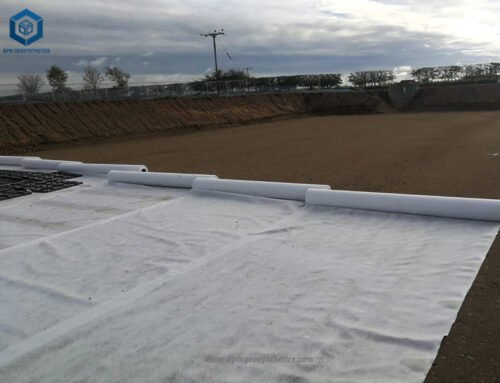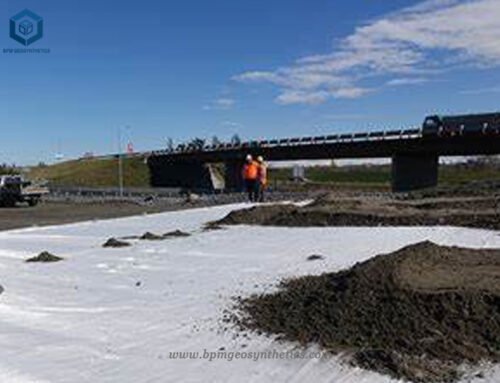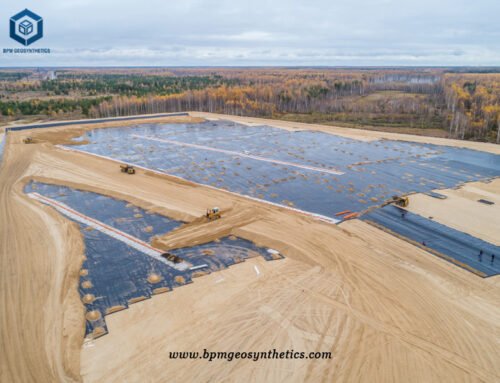HDPE pond liner Canada, also known as geomembrane pond liner, is the ideal engineering materials commonly used in landfills to prevent waste leakage. HDPE pond liner offers excellent penetration and chemical resistance. Landfill liner can effectively prevent harmful substances in waste from penetrating into soil and groundwater.
1. What Is HDPE Pond Liner Canada?
HDPE pond liner Canada refers to the utilization of High-Density Polyethylene (HDPE) pond liners in various water containment applications across Canada. These pond liners are highly favored due to their unique properties, including chemical resistance and puncture resistance. Here are some key characteristics and benefits of HDPE pond liners in Canada.
One of the primary advantages of HDPE pond liners is their extremely low permeability. This characteristic allows them to effectively isolate waste and prevent groundwater contamination, reducing the risk of environmental damage.
HDPE pond liners in Canada are also highly resistant to chemicals, gases, and microorganisms commonly found in waste. They exhibit excellent chemical resistance and can withstand corrosive substances such as acids, alkalis, salts, and organic solvents.
Furthermore, HDPE pond liners offer good mechanical strength and durability. They can be joined together through hot melt or chemical bonding methods to ensure proper sealing and stability. Additionally, when combined with other auxiliary engineering materials like geosynthetics, HDPE landfill liners can enhance the overall anti-seepage effectiveness.
2. Case Analysis for HDPE Pond Liner Canada for Landfill Project
- Destination – Canada
- Product – 5mm HDPE Pond Liner
- Purpose – Landfill Project
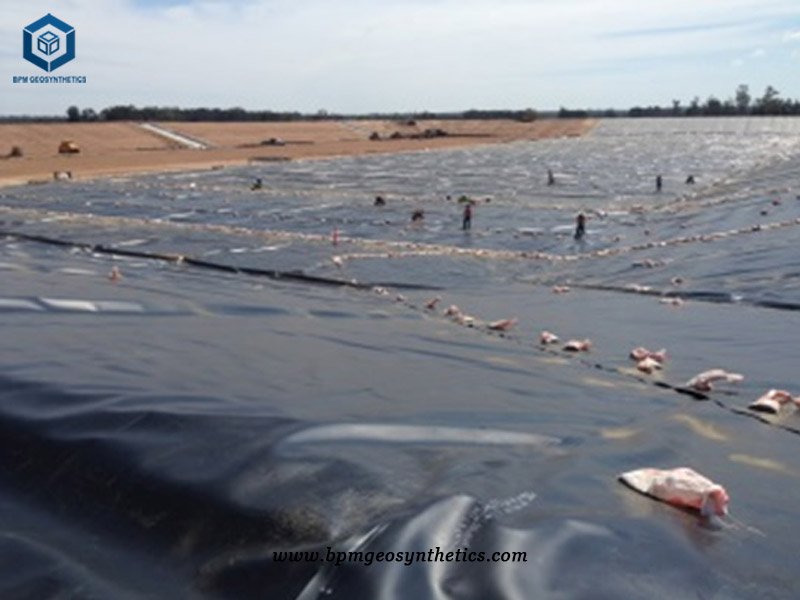
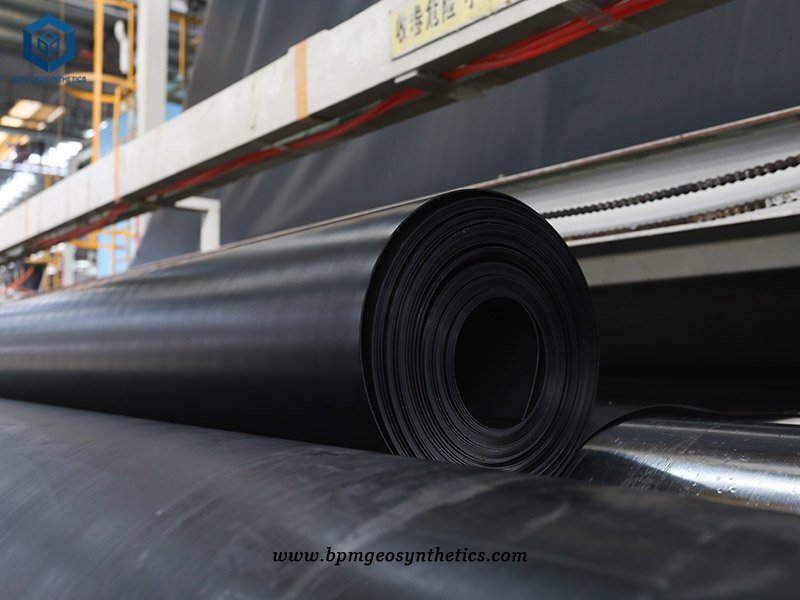
3. What Are Benefits of HDPE Pond Liner Canada?
When considering a landfill project in Canada, opting for HDPE pond liner Canada offers numerous advantages, particularly in managing the complexities associated with the waste being dumped. The landfill is receiving a range of waste, including e-waste, medical waste, and various types of complex waste and plastics, making effective isolation a significant challenge.
By choosing HDPE pond liner Canada, you can address these challenges in the following ways:
3.1 Chemical Resistance:
HDPE pond liners exhibit excellent chemical resistance, providing a reliable barrier against the migration of hazardous substances present in the dumped waste. This helps prevent contamination of the surrounding environment and groundwater. Save
3.2 Low Permeability:
HDPE pond liners have very low permeability, ensuring minimal seepage of liquids and gases from the landfill. This is crucial for containing and controlling the complex waste materials, reducing the risk of soil and groundwater contamination.
3.3 Puncture Resistance:
The piled waste in landfills often contains sharp objects or materials that can puncture liners. HDPE pond liners are known for their puncture resistance, minimizing the likelihood of damage and maintaining the liner’s integrity over time.
3.4 Durability:
HDPE pond liners are highly durable and can withstand the harsh conditions and stresses present in landfill environments. Choosing HDPE ensures long-term performance and reliability in waste containment.
By selecting HDPE pond liner Canada for the landfill project, you can effectively address the challenges posed by the diverse and complex waste materials being deposited. The liner’s chemical resistance, low permeability, puncture resistance, and durability contribute to isolating and containing the waste, safeguarding the surrounding environment from potential contamination.
4. How To Use HDPE Pond Liner Canada for Landfill Project?
The Canadian customer undertook such a landfill project, and we recommended 1.5mm geomembrane pond liner Cananda and 400g filament geotextile for the project. Geomembranes and geotextiles are most commonly used in solid waste landfills to protect surface and groundwater. The ablove synthetic materials have properties such as excellent hydraulic properties, ease of installation, and cost savings. Separation, drainage, filtration, hydraulic barriers, gas barriers, and protection are some of the functions that geosynthetic systems can perform in landfills.
Geomembranes and geotextiles are the most commonly used lining materials today. They can solve landfill problems by providing much low permeability that will ultimately stop harmful leakage.
Both materials are hot sale around the world due to their higher strength, lower permeability, maximum inherent flexibility, chemical resistance, etc. Additionally, both are extremely low-cost and long-lasting materials. Other significant advantages that they both have excellent hydraulic properties, are extremely environmentally friendly and are easy to install.
5. Installation Steps of HDPE Pond Liner in Canada
The laying and welding construction of geomembrane pond liner is a key link in the entire anti-seepage project. The construction quality of the geomembrane anti-seepage layer determines the success or failure of the entire project. Every process and link must can organize and construct carefully during construction. The following are the main steps for geomembrane pond liner installation in Canada.
(1) Geomembrane installation preparation
Open the package to check the HDPE geomembrane pond liner appearance. Record and repair any mechanical damage, production trauma, holes, breakage and other defects found.
The geomembrane construction in the previous process complies with the design and specifications. The geomembrane construction will start after passing the acceptance inspection.
Cut and ships geomembrane pond liner. Measure the actual terrain, record the actural dimensions in detail. Cut according to the plan. Transport it to the corresponding location on the construction site.
(2) Equipment requirements
Clean and test the geomembrane welding machine must be before each shift or daily work.
(3) Laying requirements for special parts
When laying pond liner Canada at the foot of the slope. The base surface should be flat and smooth when turning intersection. The geomembrane can not suspend in the air.
It is necessary to take measures to ensure the membrane pond liners adhere tightly at slope intersections.
The foot of the slope, where the side slope connects to the bottom of the site, requires special treatment. It is necessary to lay the slope HDPE geomembrane along the slope for a distance of 500mm from the slope toe. You can perform a welding operation to connect it to the HDPE pond liner at the bottom of the site.
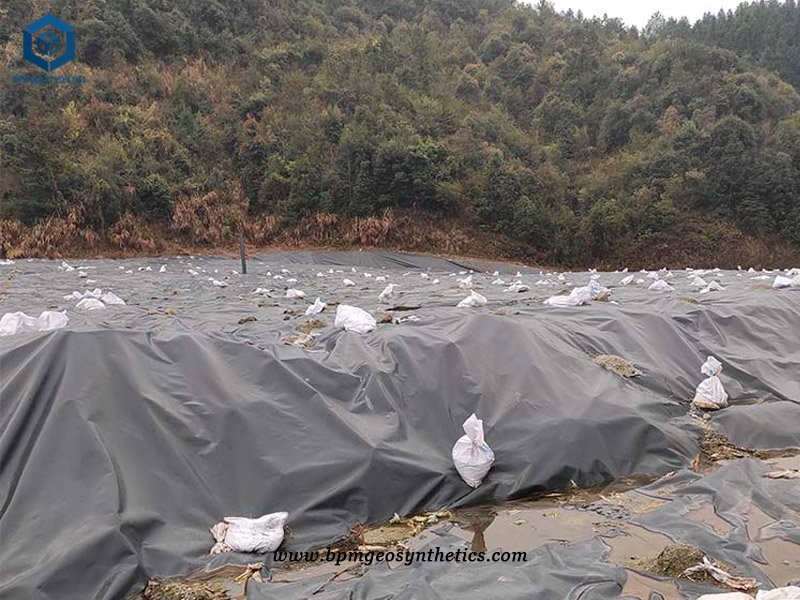
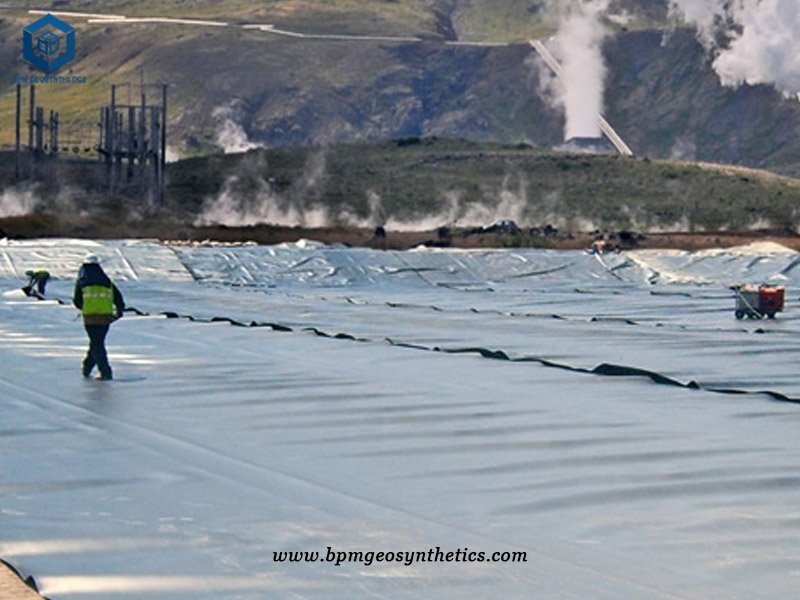
(4) Foundation preparation and leveling.
Before laying the HDPE geomembrane, it is important for the personnel to inspect the base layer. They should properly compact and level the foundation for installation. Within a vertical depth of 25mm, they must ensure the absence of any debris that could potentially damage the HDPE geomembrane. They should actively eliminate sharp objects or potential hazards that may affect the integrity of the geomembrane pond liner items.
Backfill soil degree is important when laying the HDPE geomembrane pond liner on the backfill soil foundation. The foundation laid should be free of seepage, silt, stagnant water, organic residues and harmful substances that may cause environmental pollution. The corners of the base should be smooth. Under normal circumstances, the arc radius should not be less than 500mm.
(5) Geomembrane expansion and positioning
Carefully unroll and position the geomembrane roll to ensure adequate coverage and allow for overlapping seams. You should maintain a natural overlap for welding.
Temporarily compress the geomembrane pond liner in the anchoring trench using sandbags. After welding and adjusting the geomembrane, use rammed earth for permanent anchoring. Leave a non-anchored area of 2m on both sides for subsequent welding.
Carry out rammed earth anchoring and geomembrane pond liner welding in a crisscross manner, avoiding overlapping. Avoid immediate anchoring of the newly laid geomembrane pond liner, but instead anchor it after making appropriate adjustments.
Summary
HDPE geomembrane pond liner provides impermeable lining systems in various civil engineering applications, including landfill projects. The main raw materials used are high-density polyethylene (HDPE) and medium-density polyethylene (MDPE). There are two types of geomembrane liners: smooth and rough.
HDPE geomembrane liners are ideal and cost effective material in solid waste landfills as part of the landfill base barrier system. Geomembran pond liners are combined with a gravel leachate drainage layer, a protective layer, and either a geosynthetic clay liner or a compacted clay liner to create a composite liner. The composite liner acts as the primary barrier against leachate migration to surface or groundwater. Recent studies have focused on the prevention of fluid and gas leakage from composite liners.
HDPE geomembrane pond liner offers impermeability, high chemical resistance, exceptional stress cracking capability, low permeability, excellent UV resistance. As a result, it is widely used as an anti-seepage material for pool bottoms and covers. Its applications span across landfill projects, biogas digester projects, sludge and sewage treatment facilities, and animal manure evaporation ponds.
BPM specializes in manufacturing geosynthetics products to worldwide customers since its foundation in 2007. If you have any questions or inquiries, please contact us.


